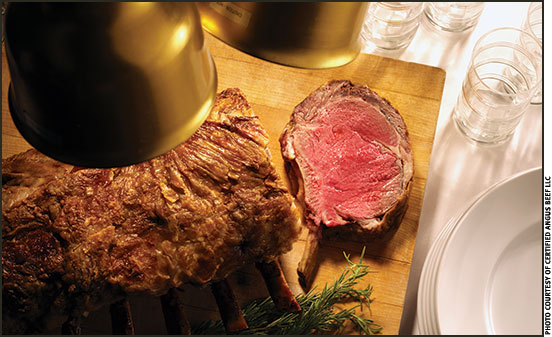
Beef Cattle Selection
Could Reduce Iron Deficiency
Already a leading source of iron, beef could be iron-enriched genetically, according to a recent Journal of Animal Science article. Moderately heritable, iron content of the muscle could be a future trait for genetic selection.
According to the Centers for Disease Control and Prevention (CDC), about 14% of infants, 4% of children and 9% of women under 49 are deficient in iron. The symptoms of iron deficiency are serious. People can experience weakness, dizziness and even hair loss. To combat iron deficiency, researchers are looking for new ways to improve iron concentrations in food products.
For a new study published in the Journal of Animal Science (www.journalofanimalscience.org), researchers evaluated genes associated with mineral concentration in beef — already a good source of iron. The researchers found that producers can increase iron concentration in beef through genetic selection.
“Iron concentrations in beef could easily be enhanced by selection, allowing many consumers to increase their iron intake by simply eating beef from such animals,” said Dorian Garrick, co-author of the study and animal science professor at Iowa State University (ISU).
Raluca Mateescu, lead author of the study and associate professor at Oklahoma State University (OSU), said mineral concentration is an important issue for beef producers and consumers. Compared with iron from plant sources, iron from meat products is easier for the human body to absorb.
In this study, researchers evaluated 2,285 Angus-sired cattle. After harvesting, they evaluated meat samples for nutrient content. Garrick said they genotyped the cattle for 50,000 markers spread across all 30 chromosome pairs. Garrick said they were analyzing the relationships between measures of performance and the genotypes. This helped them identify genes associated with iron concentration.
The researchers evaluated the heritability of mineral concentration by looking at five generations of cattle. Mateescu said iron had moderate heritability, which means the trait could be successfully selected for, but selecting cattle for high iron concentration may take time. Garrick said selecting a trait like iron concentration is more difficult than selecting a trait like growth performance.
Garrick said beef producers can use genomic information of sires to naturally increase the concentrations of iron in beef. Beef producers can manipulate the iron content of their product without having a negative impact on other carcass and palatability traits. Garrick said the researchers will need to test other traits before iron concentration in muscle can become a candidate trait for selection.
For the full research article, titled “Genome-wide association study of concentration of iron and other minerals in longissimus muscle of Angus cattle,” visit www.journalofanimalscience.org.

Editor’s Note: Laci Jones is communications intern with the American Society of Animal Science, asas@asas.org. This article is shared from the Aug. 16, 2013, edition of Taking Stock available at http://takingstock.asas.org/?p=9135.





